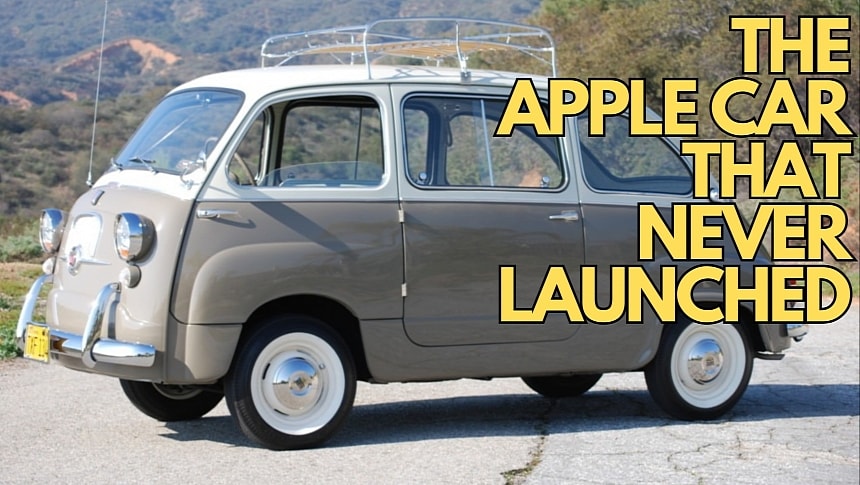Apple has canceled the Apple Car project, dissolving a 2,000-employee team to focus on artificial intelligence and other products that could benefit from its one-decade-old automotive work.
While the iPhone maker has remained tight-lipped on everything related to the development of a vehicle, people familiar with the matter reveal more details, including several related to the testing of an early concept.
A recent report reveals an episode that took place in the fall of 2015.
Apple's chief designer, Jony Ive, and CEO Tim Cook attempted an in-person demonstration of an early Apple Car prototype at the Sunnyvale, California headquarters. The Apple Car project was still in its early days, with Apple's ambitious strategy envisioning a vehicle whose purpose was to convert the regular cabin into a living room on wheels.
Apple's automotive strategy started with a strong desire to build a fully autonomous vehicle that wouldn't require human intervention. While Apple repeatedly scaled down its ambitions, the first prototypes envisioned an Apple Car resembling a Fiat 600 Multipla. Apple wanted the Apple Car to look like a European minivan, especially as the target was a living room/productivity workspace on wheels.
Jony Ive and Tim Cook wanted to test the vehicle, so they stepped inside a minivan whose purpose was to eventually be converted into a driverless car. Sporting no steering wheel, the vehicle was supposed to rely on Siri for steering and directions, with the passengers telling the assistant where they wanted to go.
Because the concept was still in its early days, the Siri-powered driving engine wasn't ready. Instead of Siri, the demonstration included an actor whose role was to read the imagined Siri response from a script. Ive even interacted with "Siri," asking for information about a restaurant on the side of the road, with the actor responding using a phrase Siri would have normally used as an answer.
As everybody knows already, the Apple Car eventually steered away from its original goal, moving towards a more conventional and somewhat dull approach. Apple wanted the vehicle to come with steering wheels and pedals, limited self-driving capabilities, and a conventional EV system, giving up on the Siri-powered driving engine.
Apple's leadership team eventually understood that such a project wouldn't make sense, and considering that developing a more innovative vehicle would involve more resources and time, it decided to drop Project Titan altogether. Apple still has an impressive collection of automotive-related patents and a team whose know-how in the car space can power other products, including artificial intelligence. Apple won't leave the automotive world completely, still relying on CarPlay, Apple Maps, and Siri to expand in this space. The upcoming WWDC developer event will provide us with a closer look at some of its next products.
A recent report reveals an episode that took place in the fall of 2015.
Apple's chief designer, Jony Ive, and CEO Tim Cook attempted an in-person demonstration of an early Apple Car prototype at the Sunnyvale, California headquarters. The Apple Car project was still in its early days, with Apple's ambitious strategy envisioning a vehicle whose purpose was to convert the regular cabin into a living room on wheels.
Apple's automotive strategy started with a strong desire to build a fully autonomous vehicle that wouldn't require human intervention. While Apple repeatedly scaled down its ambitions, the first prototypes envisioned an Apple Car resembling a Fiat 600 Multipla. Apple wanted the Apple Car to look like a European minivan, especially as the target was a living room/productivity workspace on wheels.
Jony Ive and Tim Cook wanted to test the vehicle, so they stepped inside a minivan whose purpose was to eventually be converted into a driverless car. Sporting no steering wheel, the vehicle was supposed to rely on Siri for steering and directions, with the passengers telling the assistant where they wanted to go.
Because the concept was still in its early days, the Siri-powered driving engine wasn't ready. Instead of Siri, the demonstration included an actor whose role was to read the imagined Siri response from a script. Ive even interacted with "Siri," asking for information about a restaurant on the side of the road, with the actor responding using a phrase Siri would have normally used as an answer.
As everybody knows already, the Apple Car eventually steered away from its original goal, moving towards a more conventional and somewhat dull approach. Apple wanted the vehicle to come with steering wheels and pedals, limited self-driving capabilities, and a conventional EV system, giving up on the Siri-powered driving engine.
Apple's leadership team eventually understood that such a project wouldn't make sense, and considering that developing a more innovative vehicle would involve more resources and time, it decided to drop Project Titan altogether. Apple still has an impressive collection of automotive-related patents and a team whose know-how in the car space can power other products, including artificial intelligence. Apple won't leave the automotive world completely, still relying on CarPlay, Apple Maps, and Siri to expand in this space. The upcoming WWDC developer event will provide us with a closer look at some of its next products.









